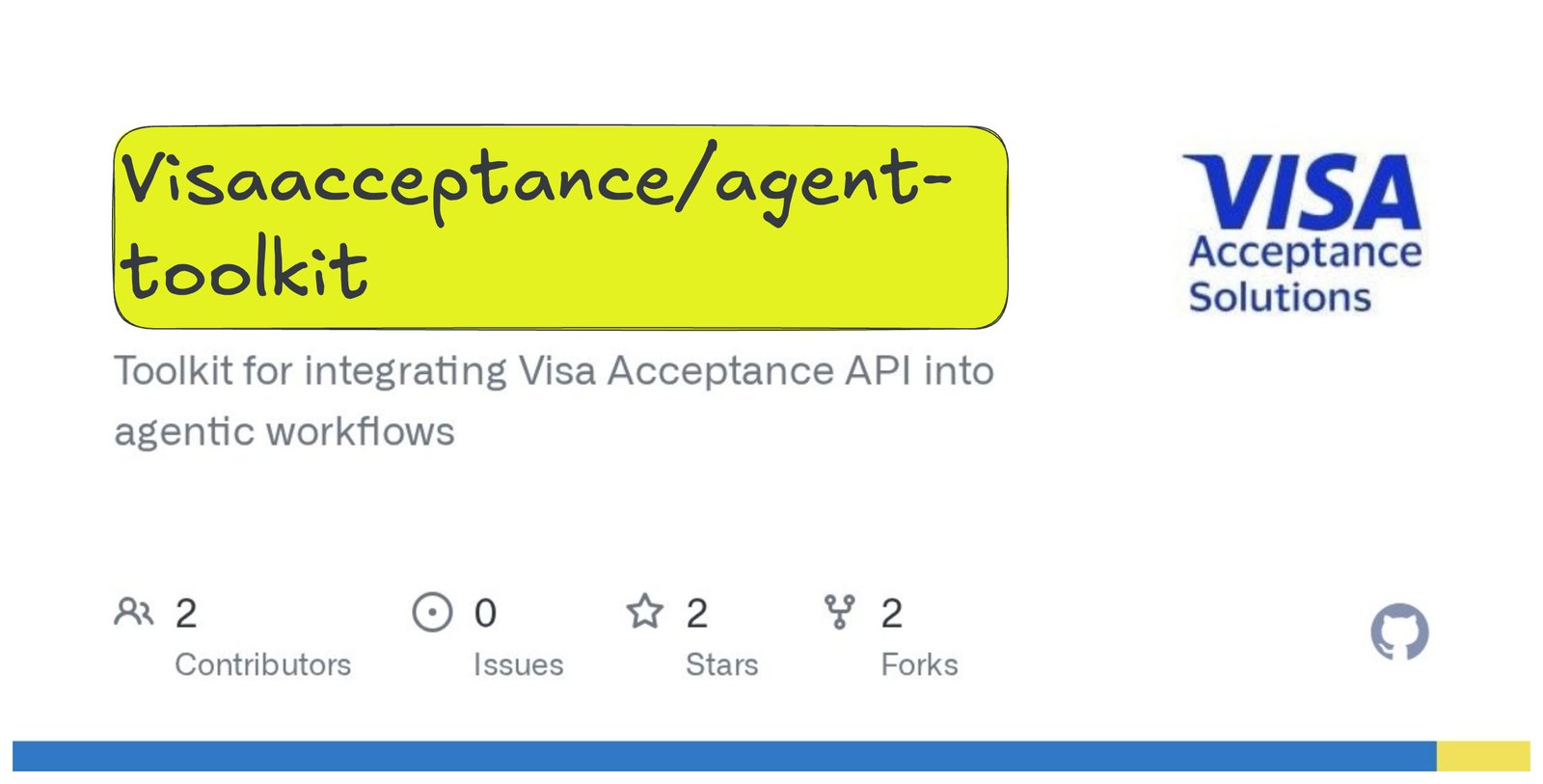Business
Deep Dive: The Checkout Killer? Visa’s AI Agents Are Open for Business: By Sam Boboev

Imagine
telling an AI assistant to “plan my trip to Miami,” then sitting back as it finds the perfect flight, hotel, and even buys that new fishing reel you wanted – all on its own. That’s the vision behind Visa’s Intelligent Commerce, a new platform that lets AI
“agent” software find, shop, and buy on your behalf. At Visa’s recent Product Drop 2025 event, CEO Ryan McInerney and Chief Product Officer Jack Forestell unveiled this initiative as a “new way to buy with AI in the same trusted, secure way to pay”. It’s Visa’s
big bet on agentic commerce, where autonomous AI agents handle the whole shopping journey for consumers. The goal? To close the “discovery – to – purchase” gap – so when an AI finds you the perfect item, it can actually check out and pay seamlessly, with all
the fraud protections and trust of Visa’s network.
One thing’s for sure, the commerce UX is evolving. In a few years, we might reminisce about how we used to spend hours comparison – shopping and filling out forms, while our AI butlers handle the mundane purchasing in the background. And Visa will be quietly
running the register for all those machine – mediated transactions – taking its (hopefully reduced) cut, but at far greater volume.
New world, same Visa? Not exactly, but Visa is doing what savvy incumbents do – skate to where the puck is headed. And in 2025, that puck is an autonomous agent eager to buy stuff for us. Get ready – your next customer might not be human, and now
is the time to plan for it.
In this deep dive, we’ll break down what Visa Intelligent Commerce is offering, why it matters for the fintech and payments ecosystem, and where it might be headed – including how it intersects with Web3’s world of programmable money and crypto. Let’s dig
in.
Visa’s Intelligent Commerce
Visa’s Intelligent Commerce initiative is essentially a developer platform and partner program to enable AI – driven buying. It introduces a suite of five APIs – spanning tokenization, authentication, personalization data, payment instructions, and payment
signals – designed to let AI agents transact as securely and smoothly as any human shopper. Visa also announced an agent onboarding framework (through a partner program) that will vet and certify AI agents before they can tap into the network. And they didn’t
go it alone – Visa lined up key partnerships with big names across AI and fintech to jumpstart this ecosystem. They’re collaborating with OpenAI to help set agentic commerce standards and enable use cases on OpenAI’s platforms. They’re working with Stripe
(a leading payments processor already experimenting with agents) to adopt Visa’s solution and drive agent – based payments. Perplexity AI, a fast – growing AI search platform, is integrating Visa’s personalization APIs to make its shopping recommendations
more tailored. Ramp, known for business finance, is exploring B2B agent use cases with Visa. And Scale AI is partnering on the infrastructure side to support enterprise – grade agent commerce. In short, Visa is rallying both AI innovators and traditional payment
players to build out an “agentic commerce” network backed by Visa’s trust.
So what do these new APIs actually do?

Visa described five core services that together give an AI agent the same capabilities a human user has in e – commerce today – with extra guardrails. Here’s a quick rundown –
-
AI – Ready Cards (Tokenization & Authentication) – Visa is upgrading its tried – and – true tokenization and user authentication tech (the “workhorses” of digital payments) for the agent era. Tokenization means your 16 – digit card number gets replaced
with a unique digital token. In this case, Visa will issue a token specific to your AI agent once your bank verifies “you are you”. That token is bound to your agent and locked by default – it only activates for purchases when you (the human) give your agent
permission. Meanwhile, strong authentication (think Visa Secure, 3 – D Secure, biometrics, etc.) is built in so that when you first “onboard” your card to an agent, your bank verifies it’s really you and approves enabling that agent. In essence, your AI assistant
gets its own Visa card token that it can use, but only under your explicit consent and only with that trusted agent platform. -
Personalization (Data Tokens) – One big advantage of an AI shopping for you is that it can know your preferences. Visa has a service called Data Tokens which takes insights from your purchase history (e.g. brands you like, hotels you prefer, your dining
tastes) and packages them into privacy – preserving “insights” an agent can use. Importantly, Visa emphasizes you stay in control of your data – you must opt in and consent to share these personalization tokens, and you can turn them off anytime. The data
tokens don’t expose your raw transaction history; they’re more like hints (“user prefers boutique hotels over budget options”) that an AI can plug into its prompts to refine recommendations. In the demo, once the user toggled on personalization, the agent’s
travel suggestions immediately improved – no more beach hotels (which the user hates) and more sushi restaurants and activities that matched his actual interests. The takeaway – Visa is injecting its rich transaction data into the AI’s logic – with user permission
– to make agent – led shopping feel eerily spot – on (and to save you from endless irrelevant search results). -
Payment Instructions – This is a brand new API Visa built to serve as a “digital handshake” of trust between user and agent. When your agent is ready to buy something, it will present you with a summary – the items, prices, merchant, etc. – and ask for
your go – ahead. Visa’s Payment Instructions API will then record the exact purchase parameters you approved (the who/what/when of that transaction) and store it as a signed record. Think of it as the agent’s permission slip – it proves the AI had your authorization
to make that specific purchase. This instruction is basically the user’s intent, formally captured. It ensures that later, if there’s any dispute (“Hey, did my AI just buy the wrong flight?”), there’s an authoritative log of what you actually agreed to. It
also limits what the agent can spend your money on – a clever way to prevent a runaway bot from buying 100 TVs on your card. Visa is essentially formalizing, “Yes, my user said it’s OK to buy
these items under these conditions.” -
Payment Signals – Finally, when the agent goes to actually charge the card token at a merchant’s checkout, Visa’s Payment Signals API comes into play. Right before payment, the agent sends Visa a “purchase signal” describing the pending transaction (merchant,
amount, etc.). Visa’s system then matches it against the stored payment instruction you approved earlier. If everything lines up correctly, Visa unlocks the token for that one transaction and lets the payment proceed to the merchant. If something doesn’t match
(say the price or merchant is different), the agent won’t get authorization to charge. This Payment Signals step also shares rich context with the bank, merchant, etc., about the transaction – helping with fraud checks, posting the transaction details properly,
and post – purchase servicing. Essentially, it links the dots for all parties – the issuer and merchant see that
this transaction was initiated by a trusted agent and conformed to the user’s instruction, which makes it far more likely to be approved and not disputed. The result should be fewer false declines, less fraud, and no more mystery “who made this purchase?”
confusion in an agent – driven transaction.
Taken together, these components form a full agent – commerce pipeline. The first time you use an AI agent to buy something, you’ll go through a one – time setup – securely add your Visa card to the agent (via a tap or scan), authenticate with your bank,
and set any limits or preferences. Visa then provisions the token and from that point on, your agent is “payment – enabled.” Going forward, the flow is – you ask agent for something → agent finds it → agent asks your permission to buy → you confirm (maybe
with a quick authentication) → agent completes purchase in the background. From the user’s perspective, it’s a conversation followed by a simple confirmation.
Behind the scenes? A lot of heavy lifting by Visa’s APIs to make it feel magic.
Disclaimer:
Fintech Wrap Up aggregates publicly available information for informational purposes only. Portions of the content may be reproduced verbatim from the original source, and full credit is provided with a “Source: [Name]” attribution. All copyrights and
trademarks remain the property of their respective owners. Fintech Wrap Up does not guarantee the accuracy, completeness, or reliability of the aggregated content; these are the responsibility of the original source providers. Links to the original sources
may not always be included. For questions or concerns, please contact us at sam.boboev@fintechwrapup.com.
Business
The AI Message From Silicon Valley: ‘No One’s Slowing Down’

After a busy day at the Goldman Sachs tech conference earlier this week, I sat down with the firm’s internet analyst Eric Sheridan to take stock. His main takeaway: “No one’s slowing down.”
Despite spending massively on AI infrastructure, almost every tech exec told him AI demand is outstripping their ability to supply intelligence, he said.
This was summed up by executives at CoreWeave, which builds and runs AI data centers. “Unrelenting,” they said, while noting there’s been yet another upward inflection in AI demand in the past four to six weeks.
During the dot-com boom of the late ’90s, internet infrastructure was built out massively based on eyeballs — just the fact that people were looking at websites. This time, there’s actual revenue from consumers and companies paying for AI services, Sheridan noted.
The conference headliner was OpenAI CFO Sarah Friar. The room was packed for her talk. Even the overflow room was full, with many analysts and investors sitting on the floor. I’ve never seen so many loafers and crossed legs at the same time.
Mike Segar/REUTERS
OpenAI is on course to generate $13 billion in revenue this year, but the company is “still massively compute constrained,” she said. That leads to tough decisions such as holding back new products, running some services intentionally slower, and having to choose which research projects get resources and which ones must wait.
This situation is also creating “strange bedfellows,” Sheridan told me. At the Goldman conference, Meta CFO Susan Li said the tech giant is working with Google, an arch rival. Friar mentioned OpenAI is also tapping Google’s cloud for capacity. Those two are going to the mat over the AI search market.
One dark cloud
The only dark cloud at the Goldman conference: Software could be disrupted by AI and that’s weighing on shares of SaaS providers. Friar was asked about this and she didn’t hold back.
In the new world of autonomous software development, it’s now easier to create bespoke software in-house. “Why wouldn’t I code the kind of software that is exactly what OpenAI needs,” the CFO said. “That is going to change the whole face of how software is developed.”
I felt a shudder ripple across the room as attendees considered how much of the world AI might consume in the coming years.
“Short everything,” someone muttered beside me as the audience got up to leave. Analysts laughed nervously as we filed out in a long, slow line.
Sign up for BI’s Tech Memo newsletter here. Reach out to me via email at abarr@businessinsider.com.
Business
Bergquist appoints directors of business automation and AI, marketing

Bergquist Inc. is strengthening its customer support with the addition of Trevor Brewster as director of business automation and AI, a newly created role, and Natalya Zaytseva as director of marketing.
Brewster has spent more than two decades working in entrepreneurship, business management and customer service related roles, with a foundation in technology and finance.
In his new role, Brewster will identify opportunities where automation and AI streamline workflows and reduce repetitive tasks, allowing employees to focus on customer support. This work will include the implementation of tools designed to centralize product information and preserve institutional knowledge to enhance efficiency and responsiveness to customer service.
“I’m excited to join Bergquist at such a pivotal time,” says Brewster. “By bringing automation and AI into the organization’s daily operations, we can simplify complex processes, reduce manual tasks and ultimately serve our customers faster and more effectively. These innovations aren’t about replacing people; they’re about giving our team the tools to focus on what matters most, building stronger relationships with our customers.”

Zaytseva has over two decades of marketing leadership experience, previously serving as marketing director at Crystal Flash Energy and head of marketing operations at Merlin. In her previous role as Americas marketing director at X-Rite Pantone, Zaytseva developed and executed regional commercialization strategies, strengthening lead generation and inside sales functions to achieve the company’s growth goals.
“This is an amazing opportunity to be part of a company that is truly committed to its customers and the industry,” says Zaytseva. “I look forward to applying my experience in marketing and in the energy industry to expand Bergquist’s already-strong brand presence, connect more meaningfully with our customers and ensure our strategies directly support their goals as well as the company’s long-term vision.”
In her new role, Zaytseva will be responsible for advancing Bergquist’s marketing strategy, focusing on expanding brand visibility, deepening customer relationships and aligning market initiatives with business development goals.
“These appointments reflect our commitment to continuous innovation and our focus on providing customers with the best possible experience,” says Lauren Clark, Bergquist CEO. “With Trevor spearheading automation and AI initiatives, and Natalya shaping our marketing vision, we are further strengthening our ability to anticipate customer needs and deliver meaningful solutions that help them grow their businesses. These appointments underscore our mission to combine innovation with expertise, ensuring that our customers have the tools, resources and support they need to succeed.”
Business
Beneva CEO: Climate change driving diversification and AI adoption

He pointed to a series of measures Beneva has implemented to contain drug costs, including mandatory transitions to biosimilars, agreements with pharmaceutical companies covering more than 100 targeted molecules, and prior authorization and step-therapy programs. Beneva also invests heavily in clinical expertise, maintaining a pharmaceutical team of over 20 professionals – including pharmacists, nurses, and technicians – who work directly with plan members managing chronic conditions, Chalifoux said.
-

 Business2 weeks ago
Business2 weeks agoThe Guardian view on Trump and the Fed: independence is no substitute for accountability | Editorial
-
Tools & Platforms1 month ago
Building Trust in Military AI Starts with Opening the Black Box – War on the Rocks
-

 Ethics & Policy2 months ago
Ethics & Policy2 months agoSDAIA Supports Saudi Arabia’s Leadership in Shaping Global AI Ethics, Policy, and Research – وكالة الأنباء السعودية
-

 Events & Conferences4 months ago
Events & Conferences4 months agoJourney to 1000 models: Scaling Instagram’s recommendation system
-

 Jobs & Careers2 months ago
Jobs & Careers2 months agoMumbai-based Perplexity Alternative Has 60k+ Users Without Funding
-

 Podcasts & Talks2 months ago
Podcasts & Talks2 months agoHappy 4th of July! 🎆 Made with Veo 3 in Gemini
-

 Education2 months ago
Education2 months agoVEX Robotics launches AI-powered classroom robotics system
-

 Education2 months ago
Education2 months agoMacron says UK and France have duty to tackle illegal migration ‘with humanity, solidarity and firmness’ – UK politics live | Politics
-

 Funding & Business2 months ago
Funding & Business2 months agoKayak and Expedia race to build AI travel agents that turn social posts into itineraries
-

 Podcasts & Talks2 months ago
Podcasts & Talks2 months agoOpenAI 🤝 @teamganassi













